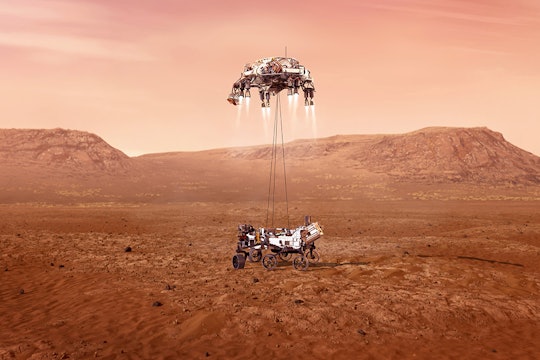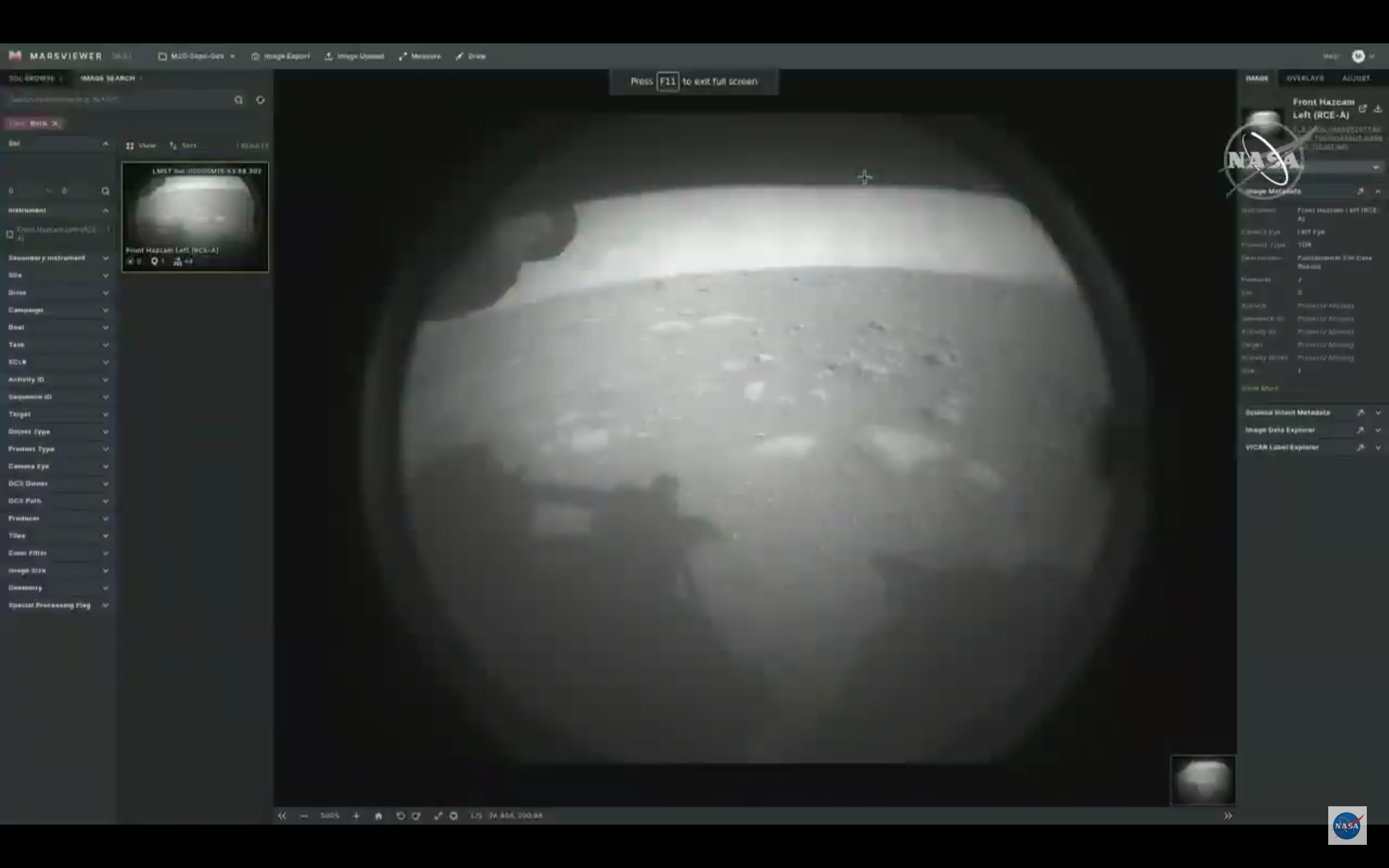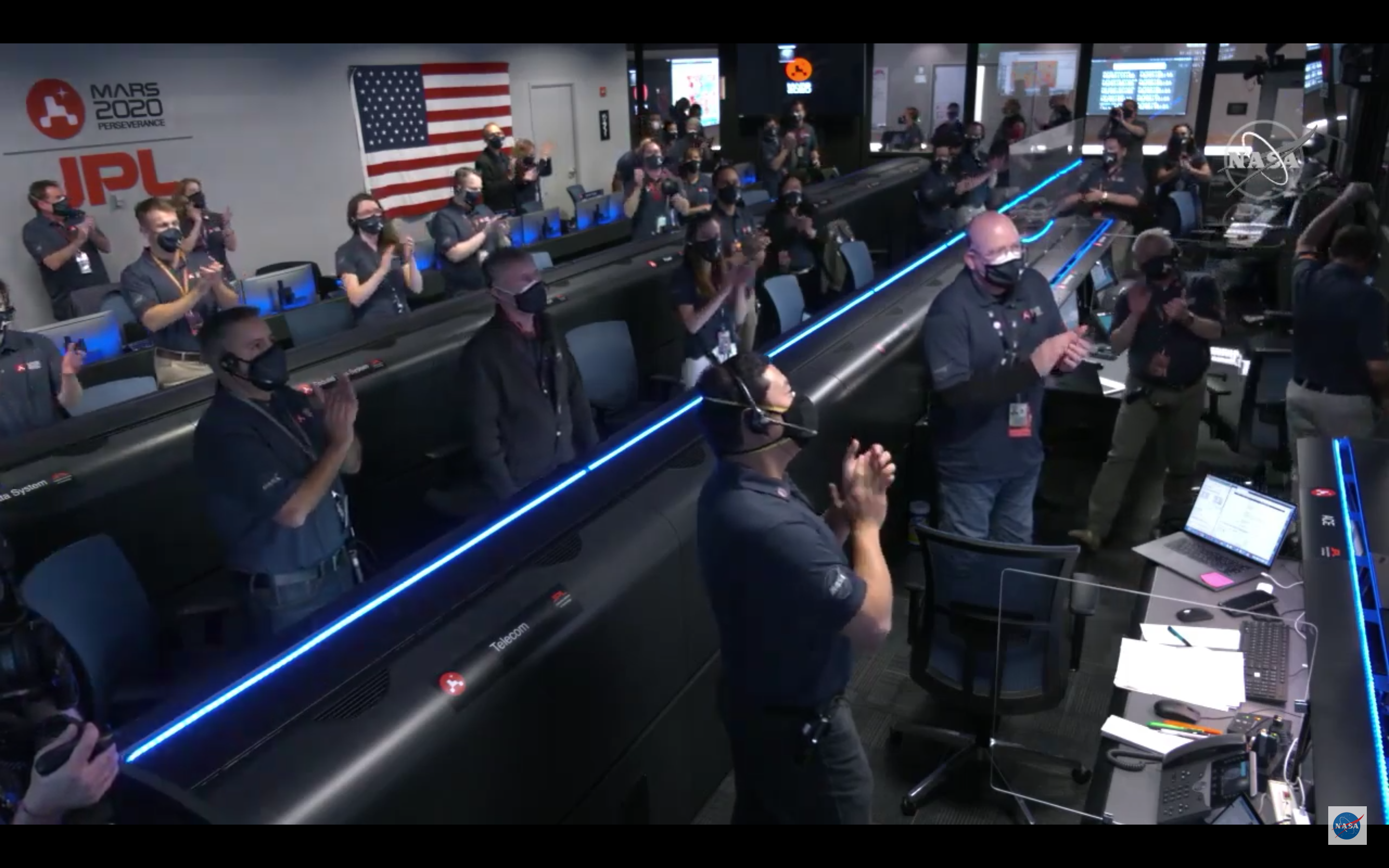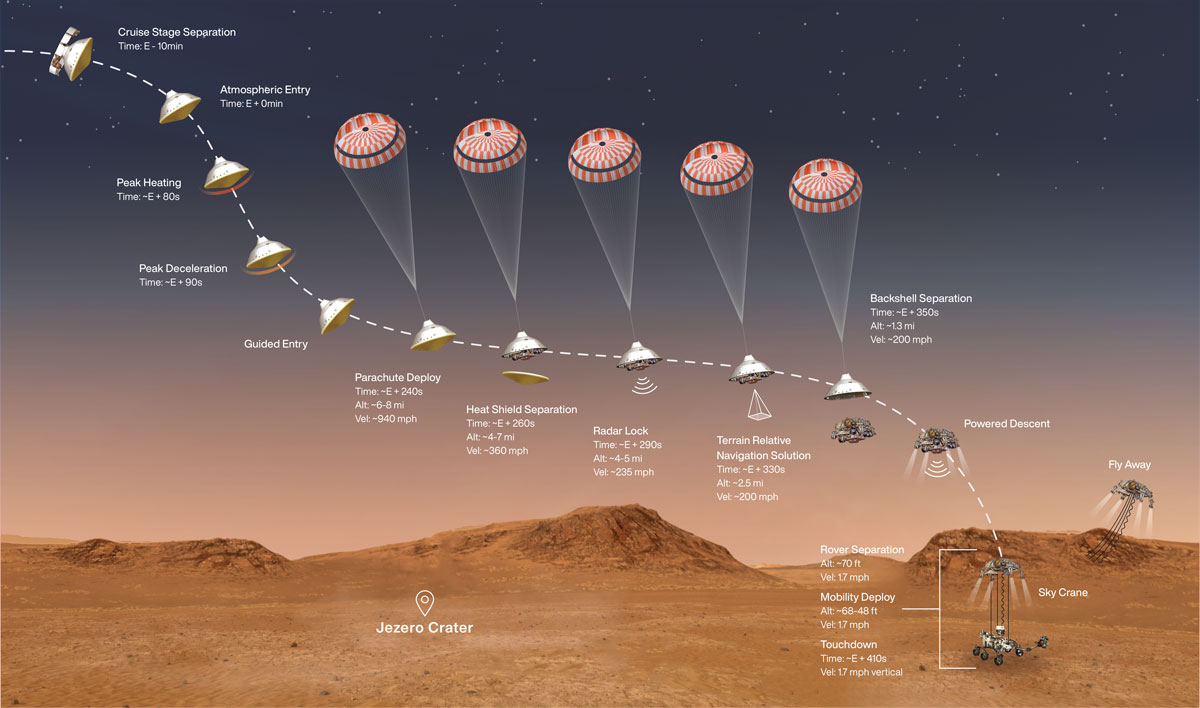
NASA
NASA's Perseverance Rover has landed on Mars
NASA's latest Mars rover and its partner helicopter Ingenuity have touched down safely
It’s official: we’ve got another robot explorer on Mars! Perseverance has successfully touched down.
Launched last summer on July 30th, 2020, Perseverance and its accompanying Ingenuity helicopter finally reached Mars today after an over six month long journey through space. At 12:56PM PST February 18th, 2021, NASA’s Perseverance rover safely touched down on the Red Planet.
With an 11 minute delay (each way) in communication between Perseverance and Earth, the mission control team had to plan ahead and make sure that the mission can land itself. The entry, descent, and landing phase (EDL) is the most stressful seven minutes of the mission — this is the make or break time for getting the spacecraft safely onto the Martian surface, as it travels through the planet's atmosphere towards its landing site.
The landing capsule had a heat shield, which protected the rover from burning up as it blazed through Mars's atmosphere. Once the capsule was nearer to the surface, a parachute deployed to slow down the craft and the heat shield separated off, exposing the rover. As this capsule moved towards Mars, it captured data about what the spacecraft experienced on its descent. Following the lead of Curiosity, Perseverance was then lowered down onto the surface using a sky crane, which gently lowered it onto the Martian surface. This entire process was controlled by pre-programmed commands and cutting edge technology, like Terrain-Relative Navigation to check the landing area in real time and compare to maps in order to avoid hazardous terrain.
The rover landed safely, with all systems "nominal" (everything looking good, as expected, the ideal outcome for a spacecraft!), and the team cheered with joy and relief. Soon after, Perseverance captured its first images, showing the Martian surface and the rover's wheels, slightly blurred by all the dust kicked up by its landing.

The first image transmitted from Perseverance from the surface of Mars
Screenshot via NASA/YouTube
Although the EDL team couldn't be all together due to the ongoing COVID-19 pandemic, they still celebrated together over their communications system and expressed their gratitude for every person who worked together to make this happen, whether or not they could be in the room today.
NASA’s Mars 2020 mission is the continuation of a long legacy of Mars exploration, and its rover Perseverance is the fifth one to explore the Martian surface after Sojourner, Spirit and Opportunity, and Curiosity.
Mars is one of the most popular destinations for space exploration, partly because it’s our closest friendly neighbor (Venus is closer to Earth, but it’s not a very hospitable place). The Red Planet is also an incredibly scientifically interesting place — it’s got all sorts of geologic features, like the mega-Grand-Canyon Valles Marineris and the super-volcano Olympus Mons. One of the other biggest draws of Mars is the possibility that billions of years ago it had life on its surface, and might even have liquid water in its ice caps now. Of course, robot exploration on Mars is also paving the way for a human expedition someday, too.

The NASA JPL crew applauding the successful landing
Screenshot via NASA/YouTube
This new mission aims to dive deeper into the question of life on Mars. Perseverance will look for evidence of past environments that could have supported life, and even for signs of past microbial life itself preserved in rocks. Perseverance aimed for the Jezero Crater — a former lake, which could hold signs of life from Mars’s wetter past. Scientists think that this crater lake could have been filled with microbial life, which would now be seen as remains washed up on ancient shorelines. Some of the rocks in this crater are also billions of years old, providing a window into the climate conditions from early Mars.
Previous rovers made important discoveries that led us to this point, shaping our knowledge of Mars's history and its ability to host life. The Spirit and Opportunity rovers found the first clues of water, from minerals that can only form in wet environments and signs of flowing water. They also found hints of Mars's warmer past, from rocks that formed in warmer temperatures. Next, Curiosity found more evidence for liquid water in the past, by analyzing rocks in an ancient stream, and more evidence that Mars used to be warmer and wetter. It also found that Mars had the "right stuff" to support life: carbon, oxygen, nitrogen, phosphorus, and sulfur. These missions are a great example of the iterative nature of science; asking questions, finding evidence, and asking more questions, all building off of past discoveries.
What's new about Perseverance, then? First off, its landing in a new spot, unexplored by other rovers. Perseverance about the same size as Curiosity (a mid-sized car), but it has upgraded instruments and new capabilities, such as upgraded cameras, the ability to drill and store rock samples, and the ability to self-drive across longer distances. Learning from the experiences with Curiosity, it also has upgraded wheels to traverse the Martian sand faster and more reliably.
In order to analyze the Martian landscape, Perseverance has cutting edge technology on board. Like all Mars rovers, it has a main camera (called Mastcam-Z) to take images of the surface and help it navigate through terrain. Another suite of instruments — SuperCam, SHERLOC, and PIXL —will be able to determine the compositions of Martian rocks with more detail than previous rovers before it and detect organic compounds on the surface. With RIMFAX, a radar imager, it will also be able to peer below the planet's surface. Scientists think they might find underground water or ice deposits, ancient bedrock (covered by dust and dirt on the surface) that could tell us about past climates, and more. Perseverance will also be a Martian weatherman, equipped with MEDA, an instrument to measure temperature, wind, humidity, dust, and more.

A diagram of Perseverance's descent to Mars
NASA
Perseverance isn’t just looking into Mars’s past — it’s also looking towards the future of human exploration. Scientists plan to use the rover to collect samples of rocks and soil, and then store them for a future mission to return them to Earth (hopefully in the 2030s). It’s also equipped with an experiment known as MOXIE, which will try to produce oxygen from carbon dioxide in the Martian atmosphere. This could pave the way for future crewed missions, who would need oxygen for breathing and rocket fuel (more than they could carry with them on their trip).
This Mars mission has more than just a rover. It also has a helicopter named Ingenuity, which is the first experiment in flying on another planet. Flying on Mars is very different from flying on Earth, since its atmosphere is so thin compared to ours. Ingenuity needs to be more powerful than Earth helicopters in order to generate enough lift in this thin atmosphere. It also has to be light (so there's less to lift) and tough enough to withstand the Martian dust. This revolutionary flight is a test of technology that could be useful in future space exploration.
Now that Perseverance is on the surface, it can finally begin its scientific mission. We'll be getting more photos from the Martian surface in the coming days, and so much more exciting Mars science in the coming months!
